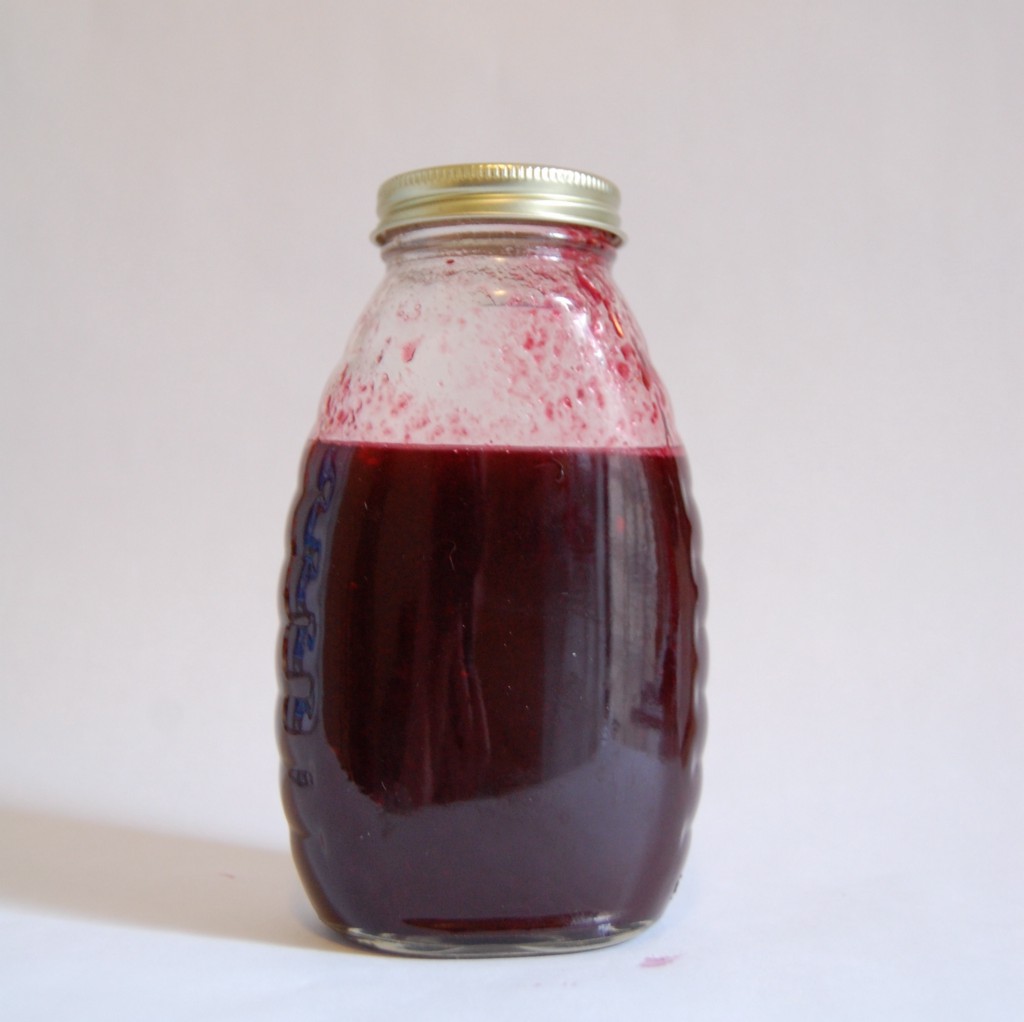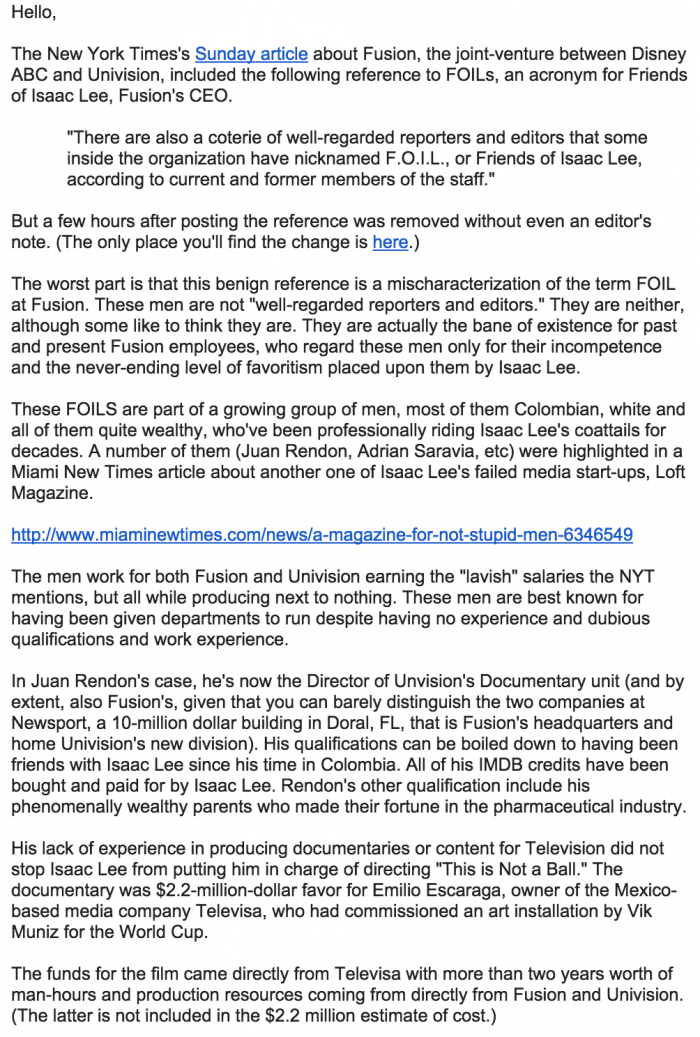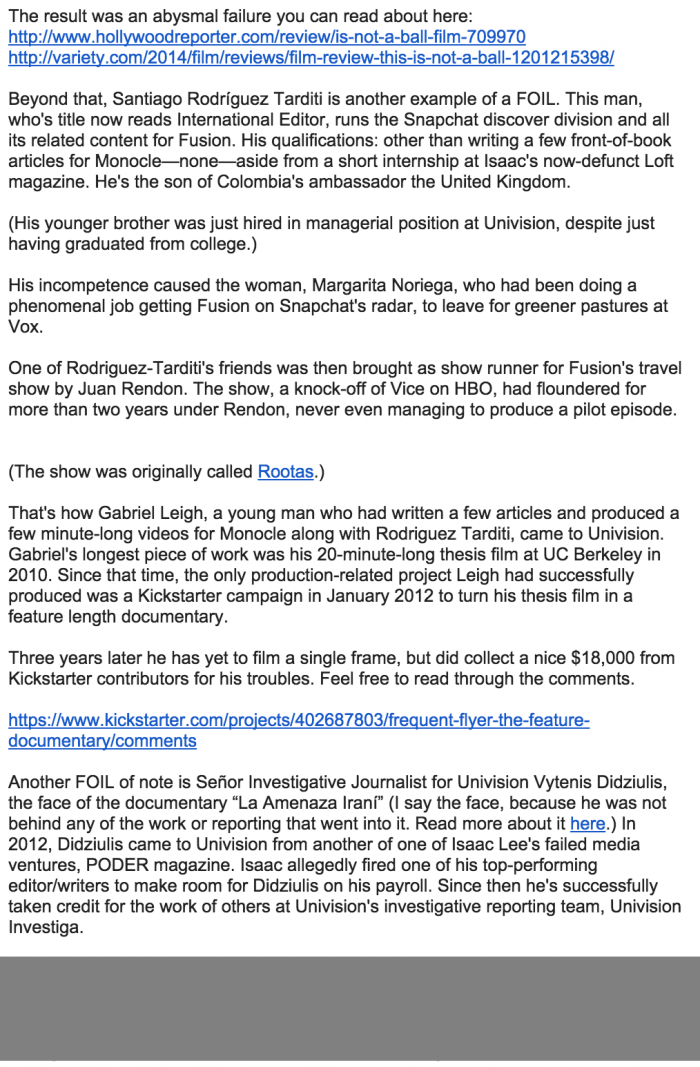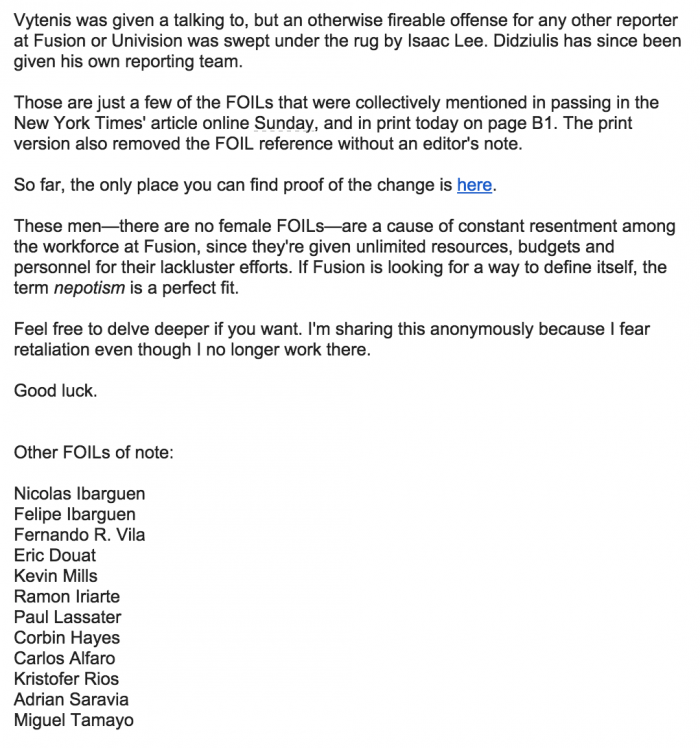Syrup the Fruit

There are a wide variety of sauces made from the delightful combination of fruit and sugar. They differ in the details of their construction, in whether they are blended or strained, in whether pectin is added, in whether they are shelf-stable, and in how snooty they sound when spoken of outside the confines of a restaurant. My favorites are the simplest, the ones that are not sealed in sterilized mason jars or plumped with added pectin, because I am very lazy and also because my favorite summertime drink, the spritzer, requires them.
Typically, jarred sauces like jams, preserves, and marmalades are made at the end of the harvest season, in the fall, in an attempt to secure the glut of perishable items for the hard winter ahead. Though we have barely begun the warm-eating season, springtime is actually a good candidate for sauce-making as well, because the produce of the springtime is so short-lived and delicate.
Jams, jellies, marmalades, and preserves (usually) are all made with added pectin, a gelling agent that’s naturally found in lots of different fruits (especially apples). But today I’m going to talk about the easier, faster cousins of jams and preserves: syrups and compotes. These are done without pectin and are often made at the same time as whatever dish you’re going to put them on (for example, you might be making pancakes while a fruit compote cooks next to it). I like this because I am a terrible planner and am constantly forgetting to prepare things ahead of time.
The fruit slurries that I’m going to talk about today are essentially modified simple syrups — which are nothing more than dissolved sugar in water. The viscosity can be messed with either by increasing the sugar to water ratio or just by cooking it longer, which will cause more of the water to evaporate, thus making the syrup thicker. Simple syrups can be “infused” with various flavors, like spices and aromatics.
Depending on the precise way you prepare these infused syrups, you can end up with a few different results. Candied or glacé fruit is the most extreme: you let fruits — often bitter ones with substantial pith like citron — sit in a warm simple syrup base for an absurdly long period of time, like days or even weeks, before straining out the fruit. This is a preservation method; the sugar pulls water out of the interior of the fruit which makes it difficult for nasty microbes to move in and spoil it. It also basically turns any fruit, even stuff that is barely edible, into candy.
Compote is a bit less extreme, with fruit cooked in simple syrup for long enough to begin to break down the fruit — more like thirty minutes. Coulis is a more vague term but can include a compote that’s been pureed or pushed through a fine-mesh strainer. And infused syrups are the easiest: Cook something in simple syrup to get all the flavor out of that something, then strain out and discard the something.
Infused syrups are very trendy to use in cocktails, but I am not into cocktails. What I AM into is seltzer, and I spend most of the summer drinking some kind of fancy infused seltzer, which is basically homemade soda (when I was a kid these were called “Italian sodas”). Make a relatively thin infused syrup, keep it in some kind of container in your fridge (preferably glass; plastic storage containers will, as always, kill us all someday), and pour it over ice with seltzer. Drink outside while the sun beats down on your refreshed, happy head.
That said! The specific type of seltzer is a distinct variable here. I use a Sodastream, which is not a particularly strong machine; you need to basically disregard the instructions entirely if you’re going to make seltzer strong enough to stand up to a syrup like these. Sodastream tells you to hit the pump until you get three loud buzzes for average-fizz seltzer, which is a lie, and five buzzes for strong seltzer for syrups, which is an even worse lie. I use somewhere between eight and eleven buzzes for this kind of spritzer. Another tip: the water needs to be as cold as possible before carbonating. If you can keep the bottle of water in the fridge overnight before carbonating, that’s best, because even the coldest water from the best faucet is not quite ideal.
The amount of syrup you use is up to both personal taste and the viscosity of the syrup you make; a thin syrup might require nearly a 1:1 ratio of seltzer to syrup, but once you get towards the very thick ones that are nearly the viscosity of maple syrup, you’ll need much less syrup. I prefer somewhere in the middle, because seltzer is very cold and it is hard to mix thick syrups with very cold liquid.

Rhubarb is a member of the buckwheat family — buckwheat being, confusingly, not a wheat at all. It looks like a Martian celery stalk and it’s one of the first bits of produce to show up in farmers markets each spring. It isn’t incredibly popular beyond the strawberry-rhubarb pie (which, okay, is maybe the best fruit pie of all), and that is because of its extreme sourness; it is very very rarely used in savory applications, though I think you could probably make a killer barbecue sauce out of it. I don’t mess with it much because preparing rhubarb is normally labor-intensive and, again, I am very lazy. But rhubarb syrup is something else. It bridges the gap between sweet and sour; though there is no vinegar added, rhubarb-syrup-based sauces have a lot in common, flavor-wise, with classic sweet-and-sour sauces like gastriques, agrodolces, and the very trendy (in shithead Brooklyn, at least) drinking vinegars. Getting the balance right takes practice, but the raw ingredients are cheap and the basic idea is really very simple, consisting of nothing more than throwing chopped rhubarb in a pot of water and sugar. The basic syrup will last in your fridge for a few weeks; if you make a compote or anything else that has the actual vegetable or fruit in it, use within a week.

Rhubarb-Infused Syrup
Shopping list: Rhubarb, white sugar, water
This recipe will vary based on the tartness of your rhubarb, but it’s easy to adjust: start with a conservative estimate of sugar and add more as needed. Select firm, bright stalks of rhubarb. Chop into chunks the way you would celery. Put four cups of chopped rhubarb, a cup of water, and a cup of sugar in a saucepan and cook over medium-low heat for about half an hour until the rhubarb is completely soft. Strain out the rhubarb; I use a double-fine mesh strainer but cheesecloth would work fine as well. Toss the rhubarb in the garbage and keep the liquid.
If you’re planning on using it in seltzer, you’re done. If you want it to be thicker, for use on, say, pancakes (this is very good!!!) add a bit more sugar and cook over low heat until it’s almost but not quite the texture of maple syrup, skimming off any foam that appears. A neat trick I got from David Lebovitz is to use corn syrup instead of sugar in this last step; corn syrup prevents the rhubarb syrup from developing any sugar crystals. It’s unhealthy but, like, so is the cup of sugar you added half an hour ago so whatever, you know?
Rhubarb-Basil Compote With Buckwheat Crêpes And Yogurt
Shopping list: Rhubarb, fresh basil, white sugar, water, buckwheat flour, eggs, milk, Greek yogurt, almonds, vegetable oil
Put a cup of water and a cup of sugar in a saucepan and bring to a boil. While it’s boiling, chop four cups of rhubarb, and toss it in once the syrup begins to boil. Lower the heat to low and cook for about twenty minutes until the rhubarb is soft. When done, turn off the heat and stir in a few leaves of chopped basil.
Mix a cup of buckwheat flour, an egg, a pinch of salt, and a cup of milk together to form a batter. If you want to use some sort of machine to do this (food processor, standing mixer) that would be much easier than doing it by hand. Let it sit for maybe twenty minutes to get all the bubbles out.
In a pan over medium heat, toss in a tablespoon of white sugar and stir, then quickly add a handful of almonds and a pinch of salt. Stir and toss for a few minutes to toast the almonds and get a little burnt sugar caramelization on them. Remove, let cool, and chop into large-ish pieces. Mix the Greek yogurt with a little honey just to take the sharp edge off it.
Get a saute pan going over medium-high heat and add a little bit of vegetable oil, no more than a couple teaspoons. Grab the handle of the pan and lift it off the heat, then ladle in maybe a half cup of the crêpe batter and quickly tilt it so the batter swirls over the entire pan in a thin layer. Put it back on the stove and watch it closely. Cook it for maybe thirt seconds then quickly flip it and cook for another few seconds, then put it on a plate and repeat until all the batter is gone.
Roll the crêpes loosely. Spoon the compote over them, then the yogurt, in some kind of artistic way which I am positive is possible but which I have never managed. Sprinkle the almonds over the top and serve.

Rhubarb is one of the very few spring items that’s available now, but these recipes would work just fine with any fruit and some vegetables; when strawberries appear at the market, pop those in or even add them along with the rhubarb. Same with peaches, apples, apricots, plums, blueberries, or, really, anything else. You’ll have to adjust the sugar level to account for the sugar content of each fruit. Strawberries, apples, grapes, and blueberries are very sweet and need hardly any sugar; most stone fruits and any citrus will need a little sugary assistance. But it’s worth the trouble, especially when you’re pouring homemade blackberry compote over vanilla ice cream and someone says “where’d you get that jam?” and you can yell “actually” at them until you both pass out.
Photo by K.B.R.
Destroyer Sorry If New Songs Are Hummable
“I really despise pop music these days, so I can’t have people walking away humming songs. I’m totally about drawing lines in the sand: We’ve done this postmodern shrugging of the shoulders for a while now, and it hasn’t really worked out, so if I make pop music at this point, it’s by accident.”
— It’s good to see Destroyer’s Dan Bejar heading into the back nine of his career with his spirit intact.
Here's the Email Everyone Got about Fusion CEO Isaac Lee and All His Buddies at Work

Below is the email that was sent to basically everyone with a blog this weekend about Isaac Lee, the CEO of Fusion, by what seems to be a former employee. (It was sent from what looked to be a throwaway Gmail address.)
The email is about a layer of men in upper management at Fusion called the “Friends of Isaac Lee.” This phrase was included in this weekend’s rather critical New York Times article about Fusion — but seems to then have been removed from the story. (I did see the phrase’s inclusion myself; I read the story immediately after it was posted and remember laughing about it.)
Every media reporter in New York (of the very few that remain!) will be assessing these claims, so why shouldn’t we all know what’s being said? So here’s the whole email — with one redaction.
Links in the email include this story about Lee’s magazine Loft, this bad review of This is Not a Ball, this Kickstarter page for Gabriel Leigh film, and this al-Jazeera story about Didziulis’ “right-wing” “war propaganda” documentary on Iran.
Do you have something to add or clarify? Let us know!



Arca, "Washed Clean"
Nightmare soundtrack composer Arca has released a sparse and fitting accompaniment for your reentry into the week. It will inspire you! (To curl up into a ball and roll until Friday.)
The Sydney Opera House as Animation Screen
by The Awl
A huge team of artists made projections for the Sydney Opera House. It was cool.
New York City, May 21, 2015

★★ The gray had yellow undertones. A few drops of rain flicked down. Downtown there were more but smaller drops, then more and fatter ones. A moment of brightness passed quickly. The roof was cold. A few small blue patches opened in the north, where they couldn’t do much good. They grew and briefly almost reached the westering sun, and a pulse of warmth came on. A gust of chilly breeze chased right after it, sending an empty beer can scraping a few inches along the glass of a tabletop.
Inequality in America
by The Awl
Here’s Charlie LeDuff working out his framework of what happens with inequality in America. (“Trailer park feels it second!” Ha.)
A Guide to Defending Your Industry

In Fortune, Dan Primack wrote a defense of Silicon Valley:
[W]hat about the countless networking and software companies that are, at their core, trying to improve the efficacy of communications? You know, that little human endeavor that in past generations has resulted in everything from the printing press to the carrier pigeon to the telephone to the Amber Alert? Are those efforts disposable, just because some may be quixotic or callous?
This, it turns out, is a helpful template for defending practically any industry.

Big Pharma is easy to bash with broad strokes, but that doesn’t mean we should.
Big Pharma is teeming with ill-mannered bros whose childhood participation trophies have led them to boast about how their mediocre drugs will change the world. It’s insufferable. Big Pharma is also full of sincere geniuses who wake up every day to work hard on solving serious problems that could indeed change the world. It’s inspiring.
Both of these Big Pharmas exist. Or, rather, they co-exist. And often the dichotomy blurs. For some reason, however, this complexity is being ignored with increasing regularity, in favor of black-and-white caricatures that would be more appropriate in John Oliver’s rant on Big Pharma than in media analysis of the actual industry.
To be sure, I understand the impulse to bash with broad strokes. Particularly as an East Coaster who reads medical sites that drool over new drug treatments as if they’re dying of xeroderma. But for every Viagra or Solvadi that is cited as emblematic of Big Pharma’s vapidness or greed, there is a researcher like Ian Frazer that is developing medicine to help prevent the outbreak of deadly diseases. Is Frazer’s HPV vaccine not solving a “big” enough problem? If successful, does it not “matter?”
Or what about the countless pharmaceutical and bioengineering companies that are, at their core, trying to improve the efficacy of medicine? You know, that little human endeavor that in past generations has resulted in everything from antibiotics to vaccines to Prozac to HIV treatments? Are those efforts disposable, just because some may be quixotic or callous?
Remember, thousands of drugs go through clinical trials each year alone. But only a couple dozen drugs receive FDA approval. The perception and reality don’t match.
Most drugs will fail, and even a majority of the successes will only end up having a minor impact, if any, on wide swaths of people or illnesses. But that would be true even if every single company in Big Pharma was focused on curing cancer (which, by the way, plenty are). Does the existence of Viagra somehow tarnish Phizer? Is a community’s output diminished because its inputs include an over-representation of narcissists and sycophants?
To me, it isn’t.
Big Pharma is far from perfect because, well, because it’s a real place. In New Jersey. It should always strive to improve and be held to account, particularly in areas of equality, charity and relevancy. But to use its flaws as an excuse for ignoring its virtues is lazy and unfair. And it does a disservice to those who legitimately are working to change the world.

Wall Street is easy to bash with broad strokes, but that doesn’t mean we should.
Wall Street is teeming with ill-mannered bros whose childhood participation trophies have led them to boast about how their mediocre bank will change the world. It’s insufferable. Wall Street is also full of sincere geniuses who wake up every day to work hard on solving serious problems that could indeed change the world. It’s inspiring.
Both of these Wall Streets exist. Or, rather, they co-exist. And often the dichotomy blurs. For some reason, however, this complexity is being ignored with increasing regularity, in favor of black-and-white caricatures that would be more appropriate in Oliver Stone’s depiction of Wall Street than in media analysis of the actual place.
To be sure, I understand the impulse to bash with broad strokes. Particularly as an West Coaster who reads finance sites that drool over hedge funds as if they’re dying of xeroderma. But for every Lehman that is cited as emblematic of Wall Street’s recklessness, there is a company like Goldman Sachs that is developing financial products to help predict and prevent the outbreak of underutilized capital. Is Goldman not solving a “big” enough problem? If successful, does it not “matter?”
Or what about the countless hedge funds and financial companies that are, at their core, trying to improve the efficacy of the economy? You know, that little human endeavor that in past generations has resulted in everything from the printing press to the carrier pigeon to the telephone to staggerlying complex financial products that add nothing to the economy but generous enormous sums of money for the firms peddling them? Are those efforts disposable, just because some may be quixotic or callous?
Remember, there thousands of banks. But only around six have been outright criminally convicted of rigging the market in the last week. The perception and reality don’t match.
Most hedge funds will fail, and even a majority of the successes will only end up having a minor impact, if any, on wide swaths of the economy. But that would be true even if every fund in Wall Street was focused on advancing capitalism (which, by the way, plenty are). Does the existence of Lehman somehow tarnish Goldman? Is a community’s output diminished because its inputs include an over-representation of narcissists and sycophants?
To me, it isn’t.
Wall Street is far from perfect because, well, because it’s a real place. It should always strive to improve and held to account, particularly in areas of equality, charity and relevancy. But to use its flaws as an excuse for ignoring its virtues is lazy and unfair. And it does a disservice to those who legitimately are working to change the world.

Hollywood is easy to bash with broad strokes, but that doesn’t mean we should.
Hollywood is teeming with ill-mannered bros whose childhood participation trophies have led them to boast about how their mediocre movie will change the world. It’s insufferable. Hollywood is also full of sincere geniuses who wake up every day to work hard on creating art that could indeed change the world. It’s inspiring.
Both of these Hollywoods exist. Or, rather, they co-exist. And often the dichotomy blurs. For some reason, however, this complexity is being ignored with increasing regularity, in favor of black-and-white caricatures that would be more appropriate in HBO’s parody of Hollywood than in media analysis of the actual place.
To be sure, I understand the impulse to bash with broad strokes. Particularly as an East Coaster who reads entertainment sites that drool over celebrities as if they’re dying of xeroderma. But for every Lindsay Lohan that is cited as emblematic of Hollywood’s vapidness, there is a director like Roland Emmerich who is developing films to help predict and prevent societal problems. Is Emmerich not solving a “big” enough problem with a movie like 2012? If successful, does it not “matter?”
Or what about the countless celebrities and directors that are, at their core, trying to improve the efficacy of entertainment? You know, that little human endeavor that in past generations has resulted in everything from the printing press to the stage to the radio to television? Are those efforts disposable, just because some may be quixotic or callous?
Remember, thousands of movies have been terrible. But in history, only around two Paul Blart films were made. The perception and reality don’t match.
Most films will fail, and even a majority of the successes will only end up having a minor impact, if any, on wide swaths of people. But that would be true even if every studio in Hollywood was focused on entertaining the masses (which, by the way, plenty are). Does the existence of Michael Bay somehow tarnish Christopher Nolan? Is a community’s output diminished because its inputs include an over-representation of narcissists and sycophants?
To me, it isn’t.
Hollywood is far from perfect because, well, because it’s a real place. It should always strive to improve and held to account, particularly in areas of equality, charity and relevancy. But to use its flaws as an excuse for ignoring its virtues is lazy and unfair. And it does a disservice to those who legitimately are working to change the world.

The prison-industrial complex is easy to bash with broad strokes, but that doesn’t mean we should.
The prison-industrial complex is teeming with ill-mannered bros whose childhood participation trophies have led them to boast about how their inhumane prisons will change the world. It’s insufferable. The prison-industrial complex is also full of sincere geniuses who wake up every day to work hard on solving serious problems that could indeed change the world. It’s inspiring.
Both of these prison-industrial complexes exist. Or, rather, they co-exist. And often the dichotomy blurs. For some reason, however, this complexity is being ignored with increasing regularity, in favor of black-and-white caricatures that would be more appropriate in HBO’s fictional depiction of prison than in media analysis of the actual place.
To be sure, I understand the impulse to bash with broad strokes. Particularly as an East Coaster who reads law and order sites that drool over corrections officers as if they’re dying of xeroderma. But for every Sheriff Joe Arpaio or Rikers Island that is cited as emblematic of the prison-industrial complex’s cruelty and abuse, there is a company like the Corrections Corporation of America that is developing prisons to help incarcerate and prevent the outbreak of deadly prisoners. Is CCA not solving a “big” enough problem? If successful, does it not “matter?”
Or what about the countless jails and prisons that are, at their core, trying to improve the efficacy of incarceration? You know, that little human endeavor that in past generations has resulted in everything from London Bridewell to the panopticon to the electric chair to the Supermax? Are those efforts disposable, just because some may be quixotic or callous?
Remember, over 2.23 million adults were incarcerated in the United States in 2009 alone. In history, very few corrections officers have ever been convicted of abuse. The perception and reality don’t match.
Most inmates will be released, and even a majority of those will only end up back in jail or prison. But that would be true even if every single facility in the prison-industrial complex was focused on corrections reform (which, by the way, plenty are). Does the existence of Joe Arpaio somehow tarnish CCA? Is a community’s output diminished because its inputs include an over-representation of narcissists and sycophants?
To me, it isn’t.
The prison-indusrial complex is far from perfect because, well, because it’s a real place. It should always strive to improve and be held to account, particularly in areas of equality, charity and relevancy. But to use its flaws as an excuse for ignoring its virtues is lazy and unfair. And it does a disservice to those who legitimately are working to change the world.
The Stories Behind Your Fur
by The Awl
Have you ever wanted to go home with a guy who traps animals for fur in the Northwest Territory? GOOD NEWS.
